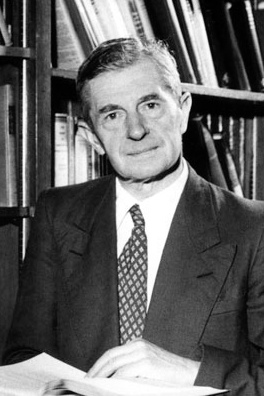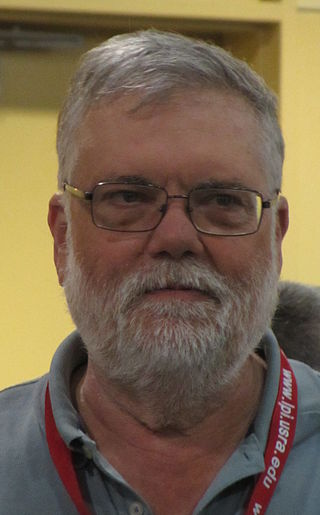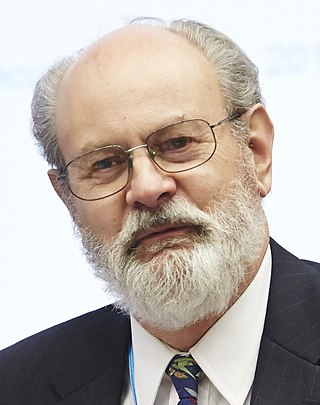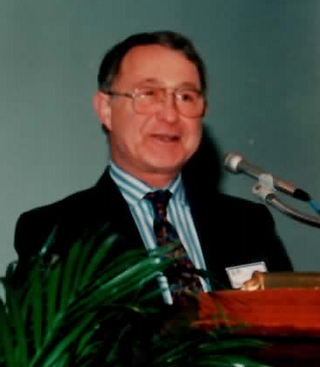Related Research Articles

William Maurice "Doc" Ewing was an American geophysicist and oceanographer.

Sydney Chapman was a British mathematician and geophysicist. His work on the kinetic theory of gases, solar-terrestrial physics, and the Earth's ozone layer has inspired a broad range of research over many decades.

Sir Harold Jeffreys, FRS was a British geophysicist who made significant contributions to mathematics and statistics. His book, Theory of Probability, which was first published in 1939, played an important role in the revival of the objective Bayesian view of probability.

Don Lynn Anderson was an American geophysicist who made significant contributions to the understanding of the origin, evolution, structure, and composition of Earth and other planets. An expert in numerous scientific disciplines, Anderson's work combined seismology, solid state physics, geochemistry and petrology to explain how the Earth works. Anderson was best known for his contributions to the understanding of the Earth's deep interior, and more recently, for the plate theory hypothesis that hotspots are the product of plate tectonics rather than narrow plumes emanating from the deep Earth. Anderson was Professor (Emeritus) of Geophysics in the Division of Geological and Planetary Sciences at the California Institute of Technology (Caltech). He received numerous awards from geophysical, geological and astronomical societies. In 1998 he was awarded the Crafoord Prize by the Royal Swedish Academy of Sciences along with Adam Dziewonski. Later that year, Anderson received the National Medal of Science. He held honorary doctorates from Rensselaer Polytechnic Institute and the University of Paris (Sorbonne), and served on numerous university advisory committees, including those at Harvard, Princeton, Yale, University of Chicago, Stanford, University of Paris, Purdue University, and Rice University. Anderson's wide-ranging research resulted in hundreds of published papers in the fields of planetary science, seismology, mineral physics, petrology, geochemistry, tectonics and the philosophy of science.
Keith Edward Bullen FAA FRS was a New Zealand-born mathematician and geophysicist. He is noted for his seismological interpretation of the deep structure of the Earth's mantle and core. He was Professor of Applied Mathematics at the University of Sydney in Australia from 1945 until 1971.

H. Jay Melosh was an American geophysicist specialising in impact cratering. He earned a degree in physics from Princeton University and a doctoral degree in physics and geology from Caltech in 1972. His PhD thesis concerned quarks. Melosh's research interests include impact craters, planetary tectonics, and the physics of earthquakes and landslides. His recent research includes studies of the giant impact origin of the Moon, the Chicxulub impact that is thought to have extinguished most dinosaurs, and studies of ejection of rocks from their parent bodies. He was active in astrobiological studies that relate chiefly to the exchange of microorganisms between the terrestrial planets.
Herbert Eric Huppert is a British geophysicist. He has been Professor of Theoretical Geophysics and Foundation Director, Institute of Theoretical Geophysics, at the University of Cambridge, since 1989 and Fellow of King's College, Cambridge, since 1970.
William Richard Peltier, Ph.D., D.Sc. (hc), is university professor of physics at the University of Toronto. He is director of the Centre for Global Change Science, past principal investigator of the Polar Climate Stability Network, and the scientific director of Canada's largest supercomputer centre, SciNet. He is a fellow of the Royal Society of Canada, of the American Geophysical Union, of the American Meteorological Society, and of the Norwegian Academy of Science and Letters..
(Stanley) Keith Runcorn was a British physicist whose paleomagnetic reconstruction of the relative motions of Europe and America revived the theory of continental drift and was a major contribution to plate tectonics.

Paul G. Richards is an English-born, American seismologist who has made fundamental contributions to the theory of seismic wave propagation and in methods to understand how the recorded shapes of seismic waves are affected by processes of diffraction, attenuation and scattering. He is the Mellon Professor of the Natural Sciences at Lamont–Doherty Earth Observatory of Columbia University.
The Inge Lehmann Medal is given out by the American Geophysical Union to recognize "outstanding contributions to the understanding of the structure, composition, and dynamics of the Earth's mantle and core". The award was created in 1995 and named after seismologist Inge Lehmann who discovered Earth's inner core.

James Freeman Gilbert was an American geophysicist, best known for his work with George E. Backus on inverting geophysical data, and also for his role in establishing an international network of long-period seismometers.
George Edward Backus is an American geophysicist, best known for his work with J. Freeman Gilbert on inverse methods for geophysical data. He is also notably credited with advancing the dynamo theory on the origin of the Earth's magnetic field.

Margaret Galland Kivelson is an American space physicist, planetary scientist, and distinguished professor emerita of space physics at the University of California, Los Angeles. From 2010 to the present, concurrent with her appointment at UCLA, Kivelson has been a research scientist and scholar at the University of Michigan. Her primary research interests include the magnetospheres of Earth, Jupiter, and Saturn.

Anthony Brian Watts FRS is a British marine geologist and geophysicist and Professor of Marine Geology and Geophysics in the Department of Earth Sciences, at the University of Oxford.
Hrvoje Tkalčić is Australian and Croatian scientist (geophysicist) and Professor E2 at the Australian National University in Canberra.
David Gubbins is a British former geophysicist concerned with the mechanism of the Earth's magnetic field and theoretical geophysics. He is Emeritus Professor of Earth Sciences at Leeds University.
Brian Leslie Norman Kennett is a mathematical physicist and seismologist. He is now a professor emeritus at the Australian National University.
John-Michael Kendall is a Geophysicist and Professor in the Department of Earth Sciences at the University of Oxford.
References
- ↑ "John H. Woodhouse". AGU. Retrieved 1 October 2020.
- ↑ "John Woodhouse - Biography". Royal Society. Retrieved 1 October 2020.
- ↑ "RAS Honours Outstanding Astronomers and Geophysicists". Royal Astronomical Society. Retrieved 14 June 2018.
- ↑ "John H Woodhouse". American Geophysical Union. Retrieved 14 June 2018.